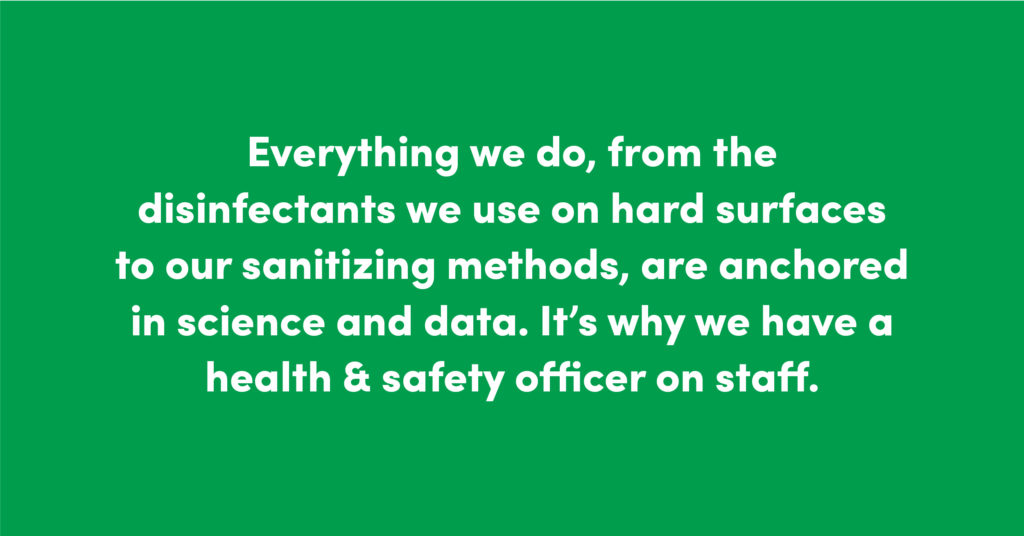
If you’ve searched online to learn more about air disinfection in your building, it’s likely you’ve been subjected to a lot of good ol’ fashioned witchcraft, with seemingly everyone out to make a buck and little regulation in place.
Well, that’s not how we go about things. Everything we do, from the disinfectants we use on hard surfaces to our sanitizing methods, are anchored in science and data. It’s why we have a health & safety officer on staff. It’s why we use EPA-approved chemicals. And it’s why if we’re going to make a recommendation on air disinfection, we insisted on finding an option backed by fact.

With all that said (sorry for the soapbox moment), we regularly speak with clients and customers about a technology and approach that uses dry hydrogen peroxide (DHP) to kill germs in the air. Wait, what? Yes, it kills microbes floating in the air and does so without hurting humans.
Below, we’ve laid out some of the essentials.
How Dry Hydrogen Peroxide Works
DHP is a form of gas. The molecule, hydrogen peroxide, is a natural component in human lungs and is harmless at levels emitted by the technology we recommend.
It works by “attaching” to microbes in the air, and effectively neutralizing them. A specific piece of technology generates the DHP and manages the level of the gas in the air, which falls well below Occupational Safety and Health Administration (OSHA) recommendations.
The reason microbes attach to DHP is that all of them need water from the environment to live. Therefore, they seek out the DHP, which is packed with moisture created from naturally occurring humidity in the air. Then, the DHP breaks down the microbe’s cell membrane (think of this as the cell’s shield that protects it) and then destroys the germ.
Is DHP safe?
DHP is incredibly safe at the minimal levels produced to kill airborne microbes. It’s harmless to humans and can hurt nothing bigger than an insect.

DHP was designed to allow people to safely remain in the room where the technology is working. This means no disruption to your staff and visitors. The gas is emitted into the air at less than 20 parts per billion. That means the technology would have to run nonstop for 2.5 years to even produce the concentration found in a single droplet of hydrogen peroxide you’d find in your medicine cabinet.
Currently, we’re seeing this technology used safely and effectively across multiple industries, including healthcare, food service and education.
What it Isn’t
As important as what it does, is what DHP isn’t. It’s important to note this technology does not use bipolar ionization or needle point. Those two approaches to air disinfection were proved to be ineffective.
Recently, one California school district pulled bipolar ionization units from its schools and is now suing the manufacturer. They did so after alleging these units made air quality worse.
On top of that, ASHRAE, the HVAC industry’s leading professional organization, said ionizers have shown “results ranging from no benefit to some benefit for acute health symptoms.”
The technology we recommend is backed by data, science and in-market testing that proves it works and is safe.
To learn more about this specific technology and how it may fit into your facility’s air purification efforts, contact us anytime.
